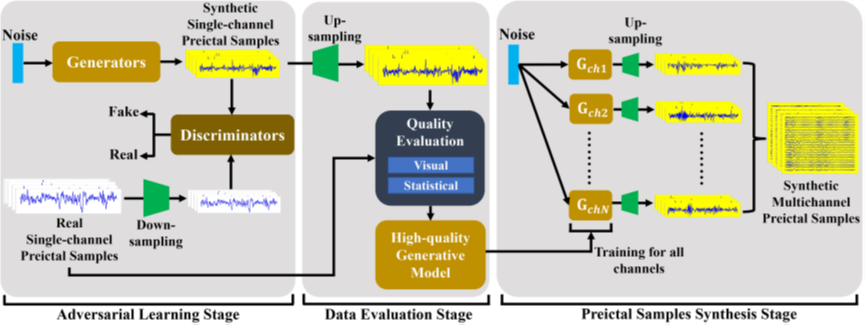Titled “Multichannel Synthetic Preictal EEG Signals to Enhance the Prediction of Epileptic Seizures”, this contribution has been published in the IEEE Transactions on Biomedical Engineering. In this publication, we present a novel multichannel preictal EEG signals synthesis approach using generative adversarial network to enhance performance of seizure prediction. Congratulations to Ph.D. student Yankun XU and to this paper’s co-authors for this excellent achievement.
Citation
Y. Xu, J. Yang and M. Sawan, "Multichannel Synthetic Preictal EEG Signals to Enhance the Prediction of Epileptic Seizures," IEEE Transactions on Biomedical Engineering, 2022, doi: 10.1109/TBME.2022.3171982.
Abstract
Epilepsy is a chronic neurological disorder affecting 1% of people worldwide, deep learning (DL) algorithms-based electroencephalograph (EEG) analysis provides the possibility for accurate epileptic seizure (ES) prediction, thereby benefiting patients suffering from epilepsy. To identify the preictal region that precedes the onset of seizure, a large number of annotated EEG signals are required to train DL algorithms. However, the scarcity of seizure onsets leads to significant insufficiency of data for training the DL algorithms. To overcome this data insufficiency, in this paper, we propose a preictal artificial signal synthesis algorithm based on a generative adversarial network to generate synthetic multichannel EEG preictal samples. A high-quality single-channel architecture, determined by visual and statistical evaluations, is used to train the generators of multichannel samples. The effectiveness of the synthetic samples is evaluated by comparing the ES prediction performances without and with synthetic preictal sample augmentation. The leave-one-seizure-out cross validation ES prediction accuracy and corresponding area under the receiver operating characteristic curve evaluation improve from 73.0% and 0.676 to 78.0% and 0.704 by 10x synthetic sample augmentation, respectively. The obtained results indicate that synthetic preictal samples are effective for enhancing ES prediction performance.
More information can be found at the following link:
https://ieeexplore.ieee.org/document/9767764

Fig.1: Flow chart of the multichannel preictal signal synthesis architecture







